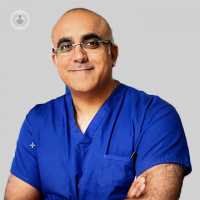Rebuilding confidence: The journey with DIEP flap surgery
Autore:Breast cancer treatments, such as mastectomy, can often leave individuals grappling with the loss of a part of themselves. However, advancements in reconstructive surgery offer a ray of hope, enabling patients to regain confidence and restore a sense of wholeness. One such innovative procedure is the Deep Inferior Epigastric Perforator (DIEP) flap surgery, which stands at the forefront of breast reconstruction techniques.
The DIEP flap surgery is a meticulous procedure aimed at recreating a natural-looking breast using the body's own tissues. Unlike traditional methods that use implants, DIEP flap surgery utilises skin, fat, and blood vessels from the patient's abdomen, typically taken from the lower abdominal region, to reconstruct the breast. This technique not only offers a more natural result but also minimises the risk of complications associated with implants.
The decision to undergo DIEP flap surgery can be made either immediately after mastectomy or at a later stage, depending on the patient's preferences and medical condition. Additionally, the procedure can be performed in one or multiple stages, tailored to suit the individual's needs and circumstances. Factors such as anatomy, medical history, and aesthetic goals play a crucial role in determining the type and timing of reconstruction.
In his latest online article, Professor Sandip Hindocha gives us a detailed overview of what to expect before, during, and after DIEP flap surgery.

Preparation:
Before the surgery, patients undergo thorough consultations with their surgical team to discuss expectations, potential risks, and surgical goals. Pre-operative evaluations, including imaging studies and blood tests, are conducted to ensure the patient's suitability for the procedure. It's essential to follow any pre-operative instructions provided by the surgical team, which may include dietary restrictions and stoppage of certain medications.
Procedure details:
Expected surgery time: Approximately 8 hours.
Anaesthesia: General anaesthesia is administered to ensure the patient's comfort throughout the procedure.
Hospitalisation: Patients typically require hospitalisation for a few days following surgery to monitor their recovery and manage any post-operative concerns.
Drains: Drains are often required post-surgery to prevent fluid buildup and aid in the healing process.
Recovery and follow-up:
Supporting garment: Patients are advised to wear a sports bra or a custom-fitted garment along with an abdominal binder for up to 6 weeks post-procedure to provide support and aid in the healing process.
Follow-up: Regular follow-up appointments are scheduled, usually within the first and second weeks after discharge, to monitor healing progress and address any concerns.
Return to work:
The timeline for returning to work varies depending on the nature of the job:
- Light work: Typically resumed 2-3 weeks after discharge.
- Moderately heavy physical work: Usually resumed 4-6 weeks after discharge.
- Heavy physical work (workout): Patients may gradually return to strenuous activities, such as workouts, approximately 8-12 weeks after discharge, under the guidance of their surgical team.
While the recovery process following DIEP flap surgery may seem daunting, it's important to remember that each individual's journey is unique. Patience, support from healthcare professionals, and a strong support system can greatly aid in the healing process.
Professor Sandip Hindocha is an esteemed consultant plastic, reconstructive, cosmetic, laser & hand surgeon. You can schedule an appointment with Professor Hindocha on his Top Doctors profile.


